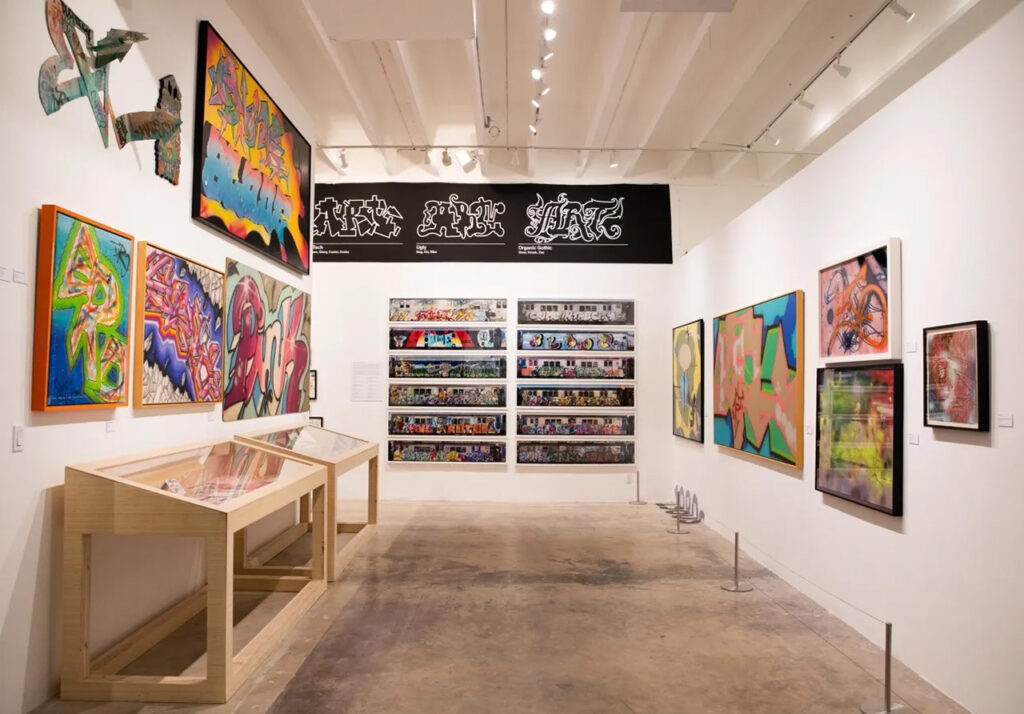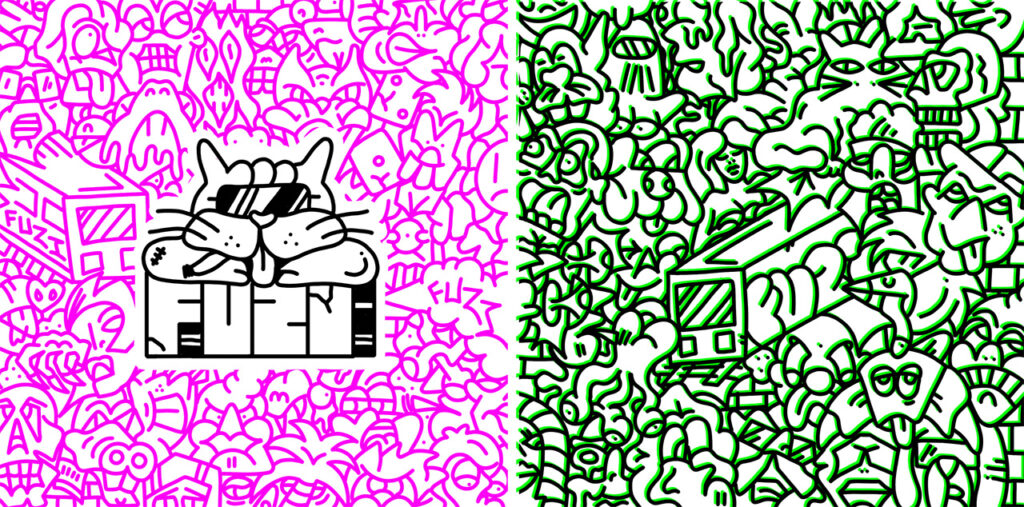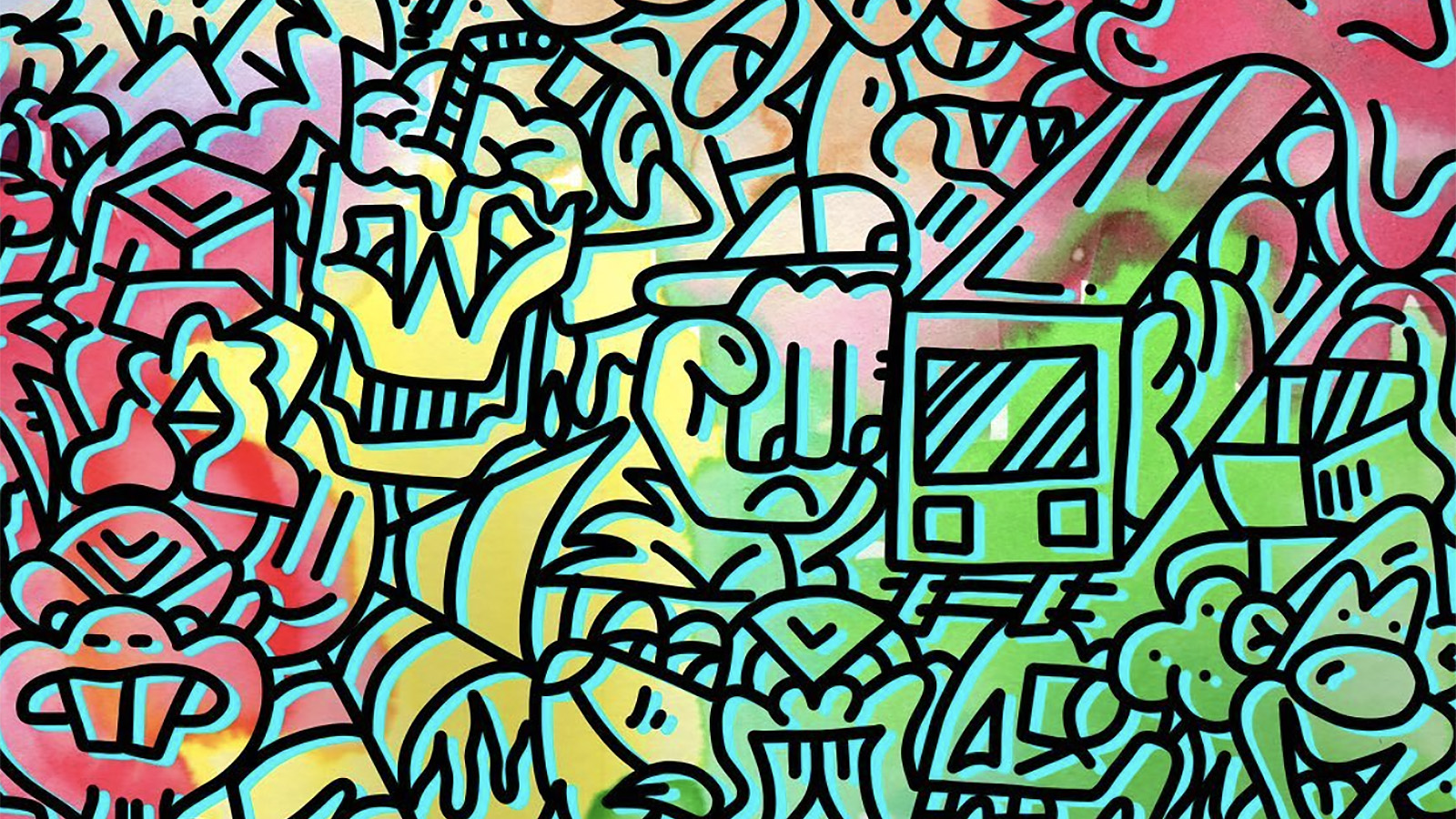However dramatic a gulf that once separated the mediums of graffiti art and NFTs — one material and temporal in nature; the other digitally made to persist on the blockchain — consider it narrowed. In fact, here at the dawn of Web3, the twain have met. In the past year or so, a growing number of graffitists from Felipe Pantone to Saber have orchestrated NFT launches, just as initiatives like Murals to the Metaverse and the Voice x Street Theory NFT Residency have sought to ensure the form endures beyond the street.
The latest to enter the fray is French graffiti artist FUZI, who, last week, released his first generative NFT collection, comprising 1,150 one-of-one tokens bearing his bold and intricate handiwork. Now sold out, the drop comes to us by way of Glyphic, a brand new platform co-founded and launched in partnership with Miami’s Museum of Graffiti. And naturally so: for a museum dedicated to documenting and preserving the history of the medium, it only makes sense for the Wynwood gallery to participate in graffiti’s emerging on-chain presence.

A co-founder and partner of Glyphic, Miami’s Museum of Graffiti is dedicated to documenting the history of graffiti via exhibitions and curated artist merchandise. Image: Museum of Graffiti
“It’s always been our goal to celebrate artists, and be a resource not just for the public, but for the artists within this movement,” says Allison Freidin, Founder of the Museum of Graffiti. “For us to be on the forefront of getting graffiti onto Web3 and the metaverse, and helping artists make that transition is something we’re really proud of.”
To be clear, FUZI’s launch does not represent a genesis collection from the Museum of Graffiti, but more so, a milestone along the organization’s journey into the NFT field. Freidin highlights how the museum has been closely watching the space for over a year, clocking drops from Defer and Cey Adams, among others, while working with artists like Lady Pink to engineer their NFT releases. “This,” she says of Glyphic’s debut, “is just our first generative project that was more available to the masses.”

FUZI’s first NFT collection comprises 1,150 one-of-one generative tokens, which have swiftly sold out. Image: Glyphic
For her, the NFT’s potential doesn’t just lie in preserving graffiti as a form, but in how it’s transforming the street art space via its attainability, accessibility, and community. The FUZI NFTs, for example, have been competitively priced to not exceed $100, so that not one but thousands of buyers can get their hands on art that, thanks to the graffitist’s profile, would cost upwards of $2,000 in the traditional art market. Additionally, “being able to talk to the artists directly in Discord and Twitter Spaces, and the community surrounding it, is really special as well,” she notes.
Not least, the FUZI collection leads Glyphic’s bid to inject “real art” into the space, she says, as opposed to yet another PFP project. In this, the platform has deployed mechanisms not unfamiliar to street culture: namely, the blind mint here mirrors that of physical blind or mystery boxes (so beloved by KAWS fans), which may or may not contain your choice vinyl collectibles. Plus, the FUZI drop also contains some 20 surprise NFTs by other artists, including 1/1s by the likes of Saber, Claw Money, and Big Sleeps — “some of the biggest graffiti artists in the world who were kind enough to participate because we’re doing it for the culture,” Freidin adds.
Which also encompasses Glyphic’s aims. Per its roadmap, the company has eyes on a metaversal “Street Art Park” in The Sandbox and a streetwear collection, all to which Glyphic collectors will have exclusive access. “What I would like to do is to continue to reward our holders in special ways,” Freidin emphasizes. It’s a build-out that in turn might draw more graffiti and street artists onto the marketplace and the blockchain, presenting them with a new way to sustain their craft and a new platform on which to leave their tag.
“Most artists we work with don’t worry about the money as much as about getting the coolest output from whatever it is they’re working on,” she says. “This just gives them another avenue to create something awesome.”



